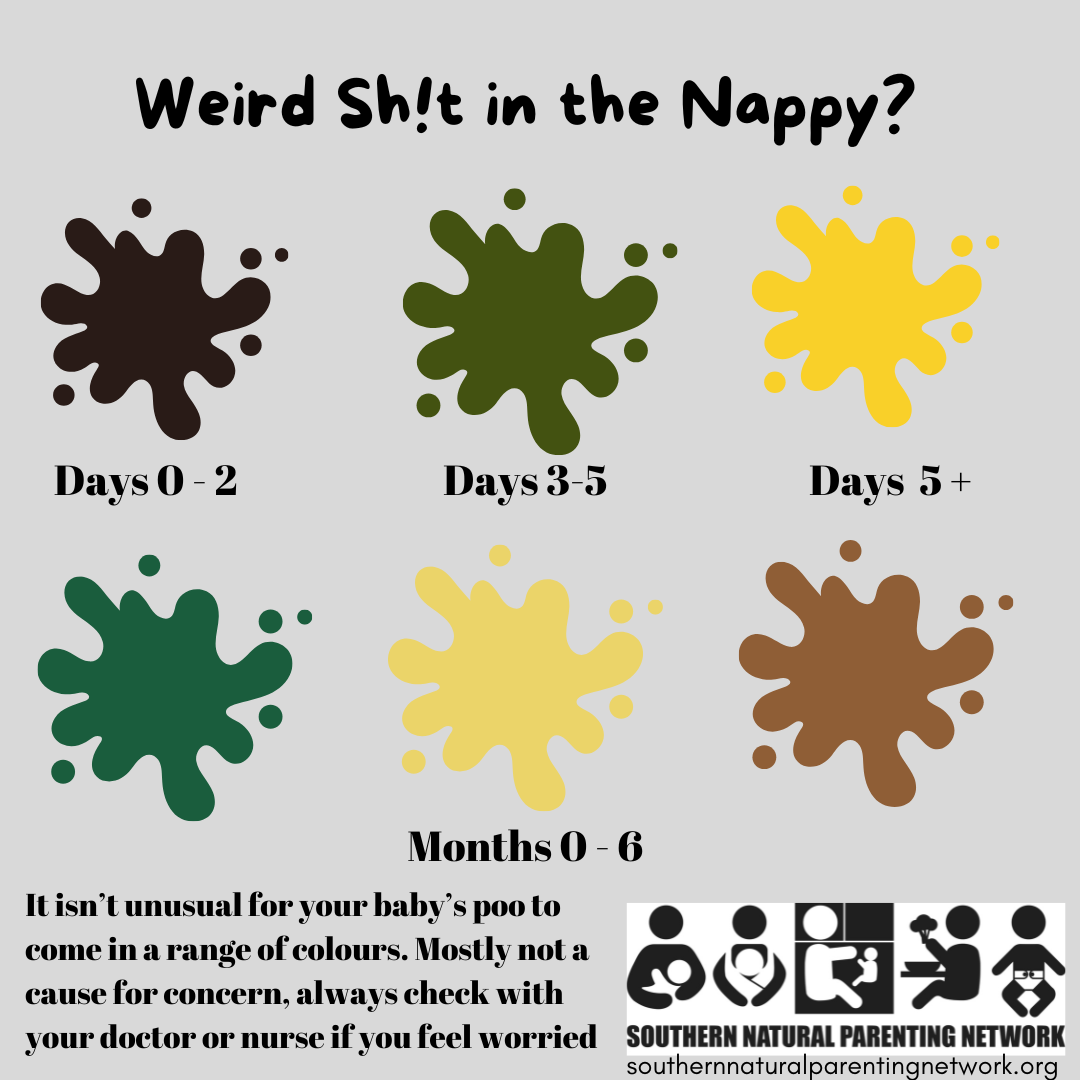Weird Sh!t in the Nappy
Young babies should have at least 5-8 wet nappies in 24 hours and poo several times a day in the early weeks. Parents do spend a lot of time considering the contents of nappies and discussing them with anyone vaguely interested - not because they lack intelligent conversation (due to sleep deprivation!), but because they are alert for signs of poor feeding or ill health.
It is true that nappy contents can tell us a lot about health and feeding. But it is also true that healthy, thriving infants can vary in the appearance of nappy contents, especially poo.
So let's delve into the world of baby poo and wee!!
The first week of life is unique in how the human body delivers waste. What we consider "normal" in the first seven days is different from the following weeks and months. You can learn more here:
From Day 5-7, babies should be passing enough urine to soak at least 6 cloth nappies or 5 single use nappies in 24 hours. These nappies will feel heavy when you change them. If you see your baby actively doing a wee, it should be clear or pale yellow. Nappies should be wet most times you change them. Babies can wee during the nappy change. Both boys and girls can spurt out urine but with infant boys, quick action with a handy cloth can minimise the "fire hose" effect!
Poo is more variable. In the first 6 weeks or so, you can expect at least 3-4 soft, wet poos every day. Each poo will be roughly the size of your baby's fist. Some babies will do more frequent poos, filling every nappy. Others might be on the lower end of frequency but pass impressive sizes. Breastmilk poo is generally mustard yellow in colour and can have seed-like flecks of fat in it.
Poos can be spectacular, loud, explosive, frothy and very liquid. Or they can be discrete and silent. Babies will often pull extraordinary facial expressions when doing a poo or not seem to notice at all. They can poo before, during or after feeding or while asleep. They can pass a single large stool or deliver instalments over a period of time. All is well.
As babies mature, the frequency of poo can decrease and vary greatly between individuals. Beyond six weeks, some will continue to poo multiple times a day while others may only pass one or two a day. Some babies decrease even further, only passing every few days or even just once a week! Occasionally, a healthy baby will go more than a week between poos. However, they will still pass soft, wet bowel motions.
Exclusively breastfed babies do not typically become constipated. They can experience discomfort when they are ready to pass a large stool but it will still be soft and wet.
Babies who are fed any infant formula will have altered digestion. Their poo will look more brown and be more formed in shape. Constipation can be a sign they are struggling to process non-human milk. Hard, concentrated poo should be discussed with your doctor or nurse. Do not give babies any remedies for constipation without medical advice.
Around six months, the infant digestive system has developed enough to begin processing other foods. You can expect changes to the appearance and consistency of poo and even see undigested food pieces pass through. Gradual transition is important to allow the digestive track to adapt and evolve to more complex digestion. The poo of babies eating solids may appear more brown and fomed.
Poo colour in breastfed babies can vary on a spectrum of yellow/green/brown tones. This occurs for a variety of reasons and is generally not of concern. You might even see hints of other colours: most commonly caused by colours in food, drinks, medicines or supplements consumed by the breastfeeding mother. If concerned, take a photo and consult your doctor or nurse.
Mothers who have an oversupply or fast flow of breastmilk will often see evidence of this in their baby's poo. The ratio of fat and carbohydrates (sugars) in the milk can change the speed of passage through the bowel: fat slows down digestion, sugars speed it up. Undigested sugars can make poo more green than yellow. This is not lactose intolerance but can be a sign of lactose overload. This imbalance can be managed with simple changes to breastfeeding and is not a medical condition.
Most of the time, the variations you see in your baby's nappy are just a different normal. If you are concerned, your doctor or nurse can advise you.




